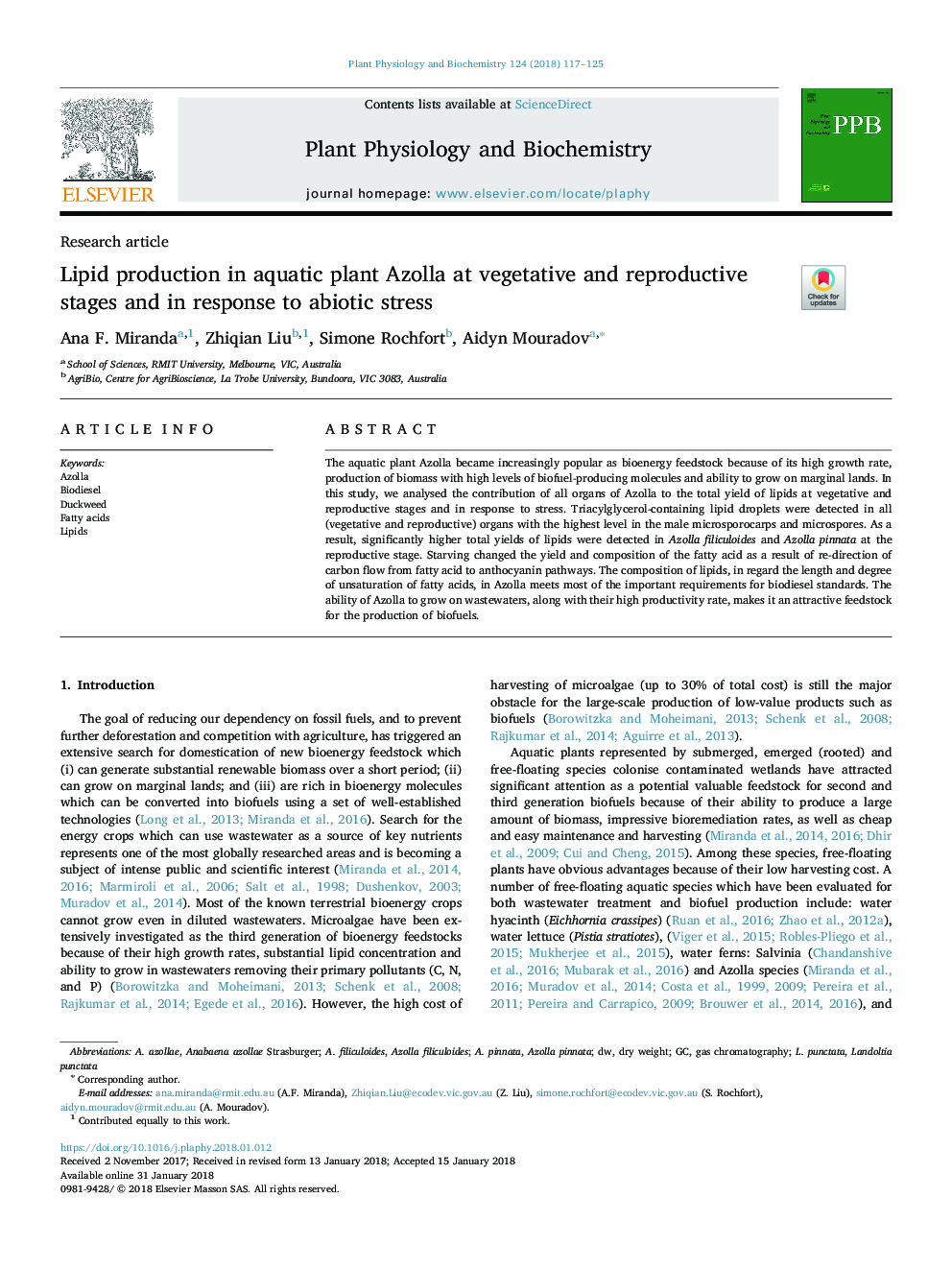| Article ID | Journal | Published Year | Pages | File Type |
|---|---|---|---|---|
| 8353321 | Plant Physiology and Biochemistry | 2018 | 9 Pages |
Abstract
The aquatic plant Azolla became increasingly popular as bioenergy feedstock because of its high growth rate, production of biomass with high levels of biofuel-producing molecules and ability to grow on marginal lands. In this study, we analysed the contribution of all organs of Azolla to the total yield of lipids at vegetative and reproductive stages and in response to stress. Triacylglycerol-containing lipid droplets were detected in all (vegetative and reproductive) organs with the highest level in the male microsporocarps and microspores. As a result, significantly higher total yields of lipids were detected in Azolla filiculoides and Azolla pinnata at the reproductive stage. Starving changed the yield and composition of the fatty acid as a result of re-direction of carbon flow from fatty acid to anthocyanin pathways. The composition of lipids, in regard the length and degree of unsaturation of fatty acids, in Azolla meets most of the important requirements for biodiesel standards. The ability of Azolla to grow on wastewaters, along with their high productivity rate, makes it an attractive feedstock for the production of biofuels.
Keywords
Related Topics
Life Sciences
Agricultural and Biological Sciences
Plant Science
Authors
Ana F. Miranda, Zhiqian Liu, Simone Rochfort, Aidyn Mouradov,
